Ford’s 2002–05 Thunderbird could finally fly as a future classic
Remember the good old days of the late 1990s? That’s the decade that reintroduced cars from the even better old days! Be the VW New Beetle (1998) or cars with throwback influences (Plymouth Prowler, PT Cruiser, Audi TT, and Chevrolet SSR, to name a few in a long list), automakers quickly figured out that going retro meant raking in the cash. The market was primed for Ford to do the same, and that’s what it did … eventually. In the case of the Thunderbird, half-heartedly.
The new, retro-styled T-bird was introduced at the 1999 North American International Auto Show in Detroit. Its retrofuturist design pulled at all the right heartstrings and utilized Ford’s upscale DEW98 chassis, which also underpinned a pair of aspirational upstarts, the Lincoln LS and the Jaguar S-Type. The detuned Jaguar V-8 ensured the T-bird would rumble, and an impressive palette of eggshell-inspired colors completed the ’50s look. The stage was set for a rapid progression from concept to production.
But this period in Ford’s history was marred by a transition away from its core competencies. As CEO Jac Nasser suggested, “Ford can’t build the company if it holds on to a mind-set that doesn’t respond swiftly to consumers’ needs.”
Rushing the 1999 Thunderbird to production wasn’t one of those consumer needs: The final product arrived roughly two years after the concept, for the 2002 model year. Despite not striking when the iron was hot, the first year of production still netted 31,368 customers—solid numbers for a niche-interest vehicle. That number halved in 2003, a disappointing figure considering the extra 28 horsepower and fatter torque curve offered by that year’s revised V-8 engine. Sales continued to drop until the final year in 2005, but the story doesn’t end there.
While the Thunderbird was initially a flash in the pan, it was not a failure, as many across the internet suggest. The car, built on the prevailing popular design of the moment and one of the strongest American nameplates around, was unequivocally not the problem. There was a market for a retro Thunderbird roadster, one whose loyalty was on par with that of the low-volume Chevrolet Corvette. But no car is made in a vacuum, and corporate interests of a struggling company swirled above the T-Bird like hurricane-force headwinds.
The platform beneath the retro sheetmetal and the factory that created the Thunderbird were each ultimately deemed more of a liability than an asset at Ford. To a company in transition, the T-Bird and its Lincoln LS sistership would never sell in numbers that justified their unique parts and their space at a factory of questionable utility. But that didn’t stop forces from trying to alter the fate of the DEW98 platform—there could have been a happier ending.
The history of the Thunderbird has been intertwined with that of Lincoln since the 1960s, so the notion of 2000s Lincoln making its own version of this Thunderbird was not without merit. Called the Mark X, Lincoln’s concept sported unique sheetmetal and a different dashboard in place of the one shared by the Thunderbird and the LS. The same applied to the stunning Ford Forty-Nine, which used the same DEW98 underpinnings but clothed them in one of the most dramatic examples of Ford’s retrofuturist aspirations. It’s a shame that FoMoCo rejected both concepts, but the decision comes as no surprise: The factory in Wixom, Michigan, was on the chopping block (RIP, as of 2007), and Ford realized platform interchangeability with Jaguar, a profit-sucking brand it no longer wished to own, was not a good long-term move.
With the retirement of Jacques Nasser and the ascension of Bill Ford, perhaps the Thunderbird could have transferred over to the Mustang’s platform and factory, as that model shared parts with Ford products at lower price points. (Hindsight, especially looking back at the success of the Fox-body chassis that the two models shared from the late ’70s into the ’90s, suggests such a move should have always been the case.) But Ford’s new direction, The Way Forward, had no room for expensive tomfoolery: The company was hemorrhaging cash, putting up the crown jewels as collateral on $23.6 billion in loans, and fighting for its survival a mere three years before its GM and Chrysler counterparts declared bankruptcy.
Such a strained situation is absolutely, unequivocally not the time to build a brand around a luxury sports roadster, no matter its name and legacy. With added context, the notion that the 2002–05 Thunderbird was a failure falls away, revealing a tragic tale with multiple villains. More to the point, the machine itself was a solid effort with a loyal following, and though buyer demographics might look like you’d expect at a glance, there’s more to these numbers than what’s on the surface.
It shouldn’t come as a surprise that the eleventh-generation Thunderbird’s vintage style appeals to boomers more than anyone else (65 percent), but their share of T-bird quotes is also rising. Also heading upward is interest among millennials, which has nearly tripled since the beginning of 2020. Their share is a modest 3 percent, but the growth rate is significant. Though the pre-boomer market share as a whole is decreasing, ’02–05 Thunderbirds are a popular choice among this segment and outstrip buyers of the original 1955–57 Thunderbird (18 percent vs. 16). Special editions of this Thunderbird get the most attention across all demographics.
Speaking of special iterations, in 2002, Ford made 200 units of black and silver Neiman Marcus edition. The next year brought the James Bond–themed, orange and coral 007 Edition (700 units made), and a Pacific Coast Roadster edition in debuted in 2004 (1000 units). The final year of production coincided with the Thunderbird’s 50th Anniversary, so a unique Cashmere Edition (1500 units) was introduced. Unlike previous celebrations, the Cashmere Thunderbird shared its anniversary fender emblems with all 2005 models, leading many to believe all models of that vintage are commemorative editions. That confusion might undermine the market for the Thunderbird’s legitimate special editions, but their impressive design and unique trimmings are indeed attracting buyers, and the Anniversary cars are trending up in value.
Much like the 1977–79 Continental Mark V decades before, Thunderbird special editions command a modest premium over a regular Thunderbird (which was available either in a Deluxe or a more upscale Premium trim). The Neiman Marcus edition commanded a significant price premium in late 2022, and though it has gone through a slight pandemic bubble, limited supply should keep it at the top of the T-Bird market, in similar fashion to the Diamond Jubilee versions of the aforementioned Mark Series.
For all derivations of the eleventh-generation Thunderbird, Hagerty Price Guide values hit their lowest point in mid-2020, and aside from the Neiman Marcus cars, prices have rebounded since settling in 2022. Coupled with the slightly growing younger demographics (and the die-hard older fanbase), the slight upward trend in this cooler market is a healthy sign and a positive indicator for the future.
As it ages, the Thunderbird is transitioning from a vehicle for a certain generation to an icon for all ages. It is only a matter of time before younger folks embrace the eleventh-generation Thunderbird for its retro vibes coupled with the added benefits of modern performance, safety, and efficiency.
Ford once said this last Thunderbird “epitomizes the American Spirit” and “recalls a simpler, more down-to-earth era.” In that regard, Ford nailed the brief. But underneath the veneer of good times and great memories lay a company struggling to find itself, years before a global financial crisis forever altered the automotive industry. That symbolism of optimistic determination could very well be the best thing about the 2002–05 Ford Thunderbird.

***
Check out the Hagerty Media homepage so you don’t miss a single story, or better yet, bookmark it. To get our best stories delivered right to your inbox, subscribe to our newsletters.
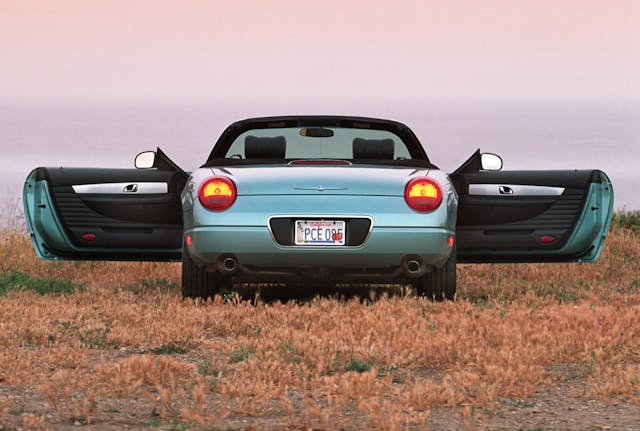
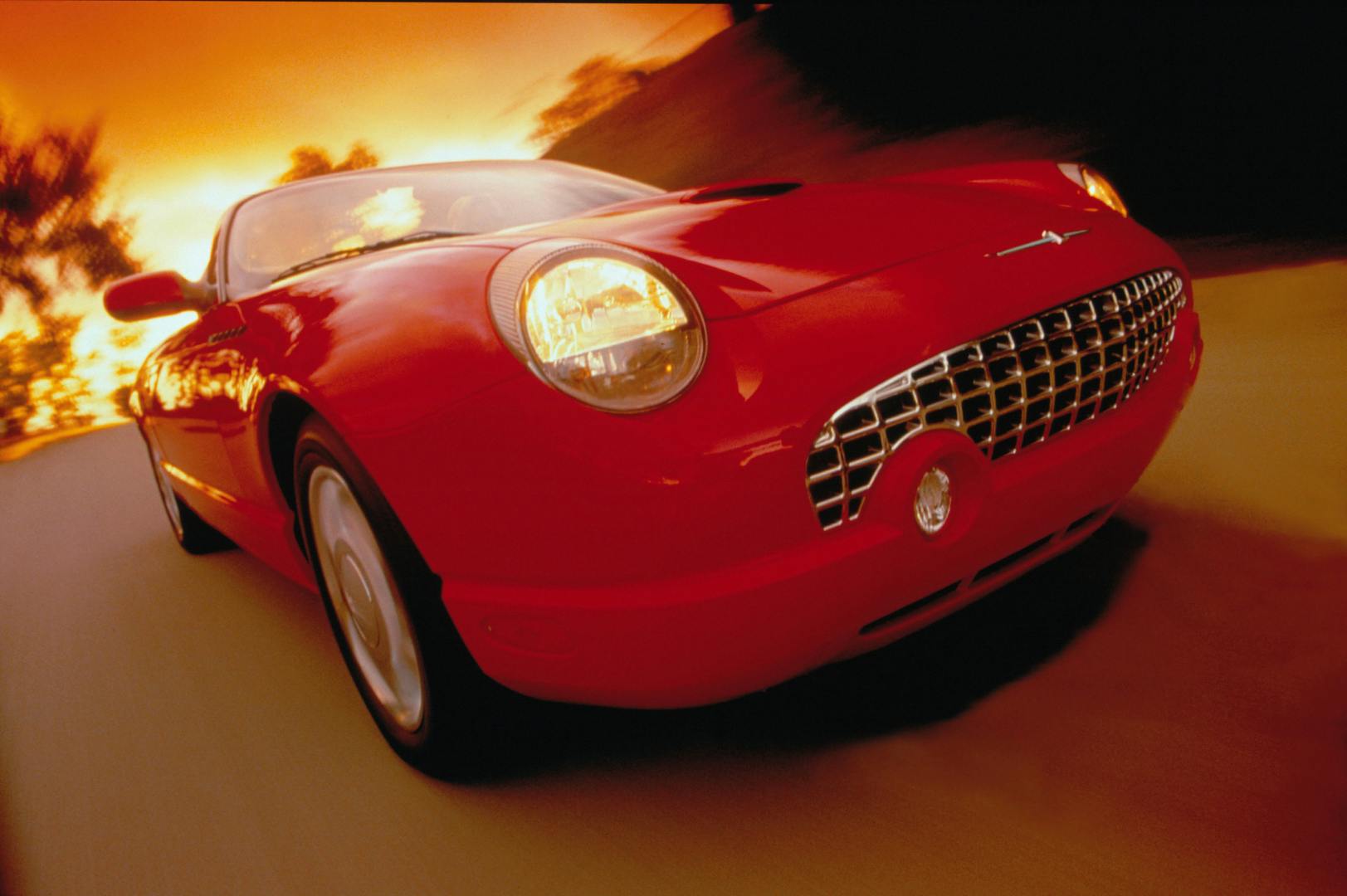
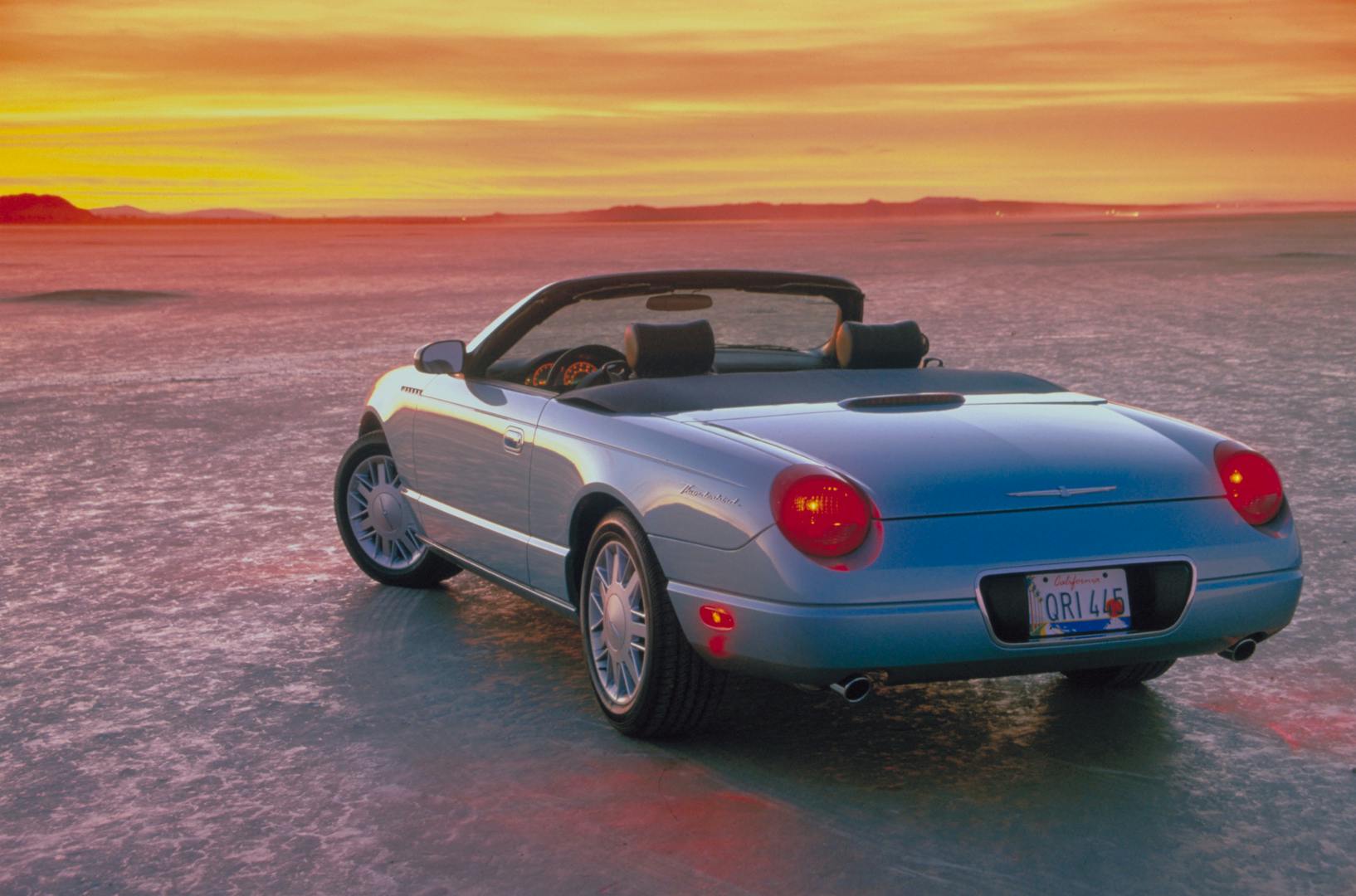
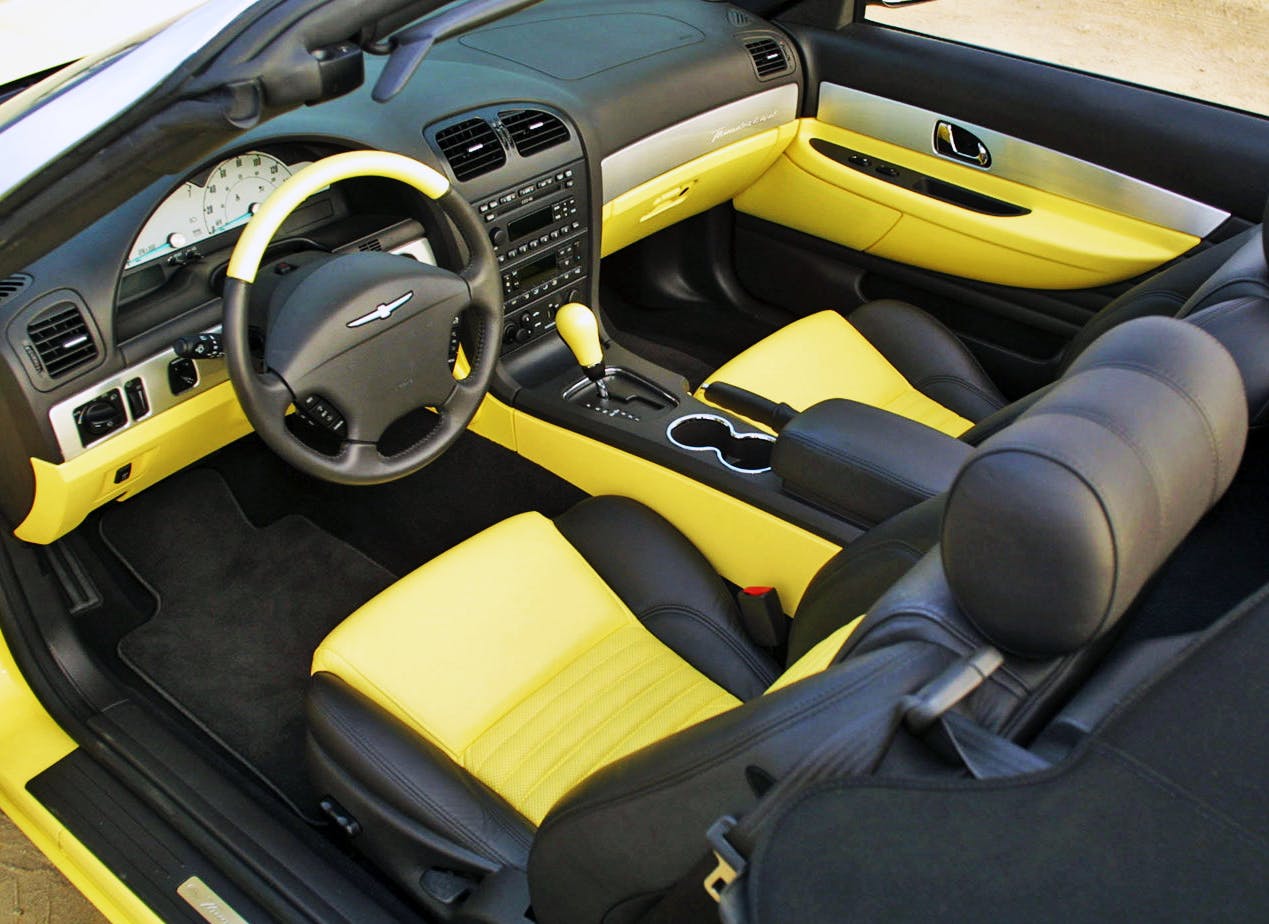
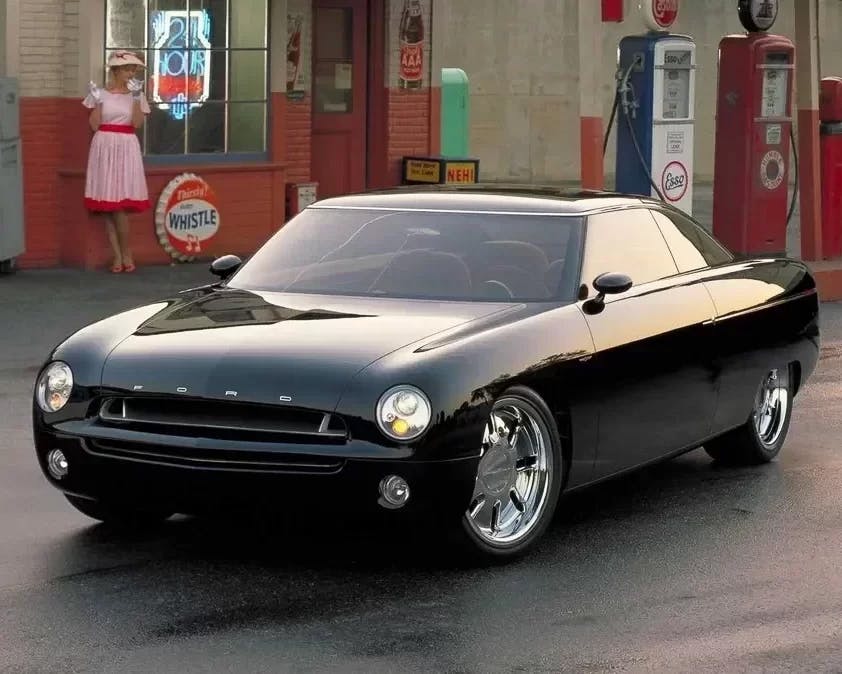
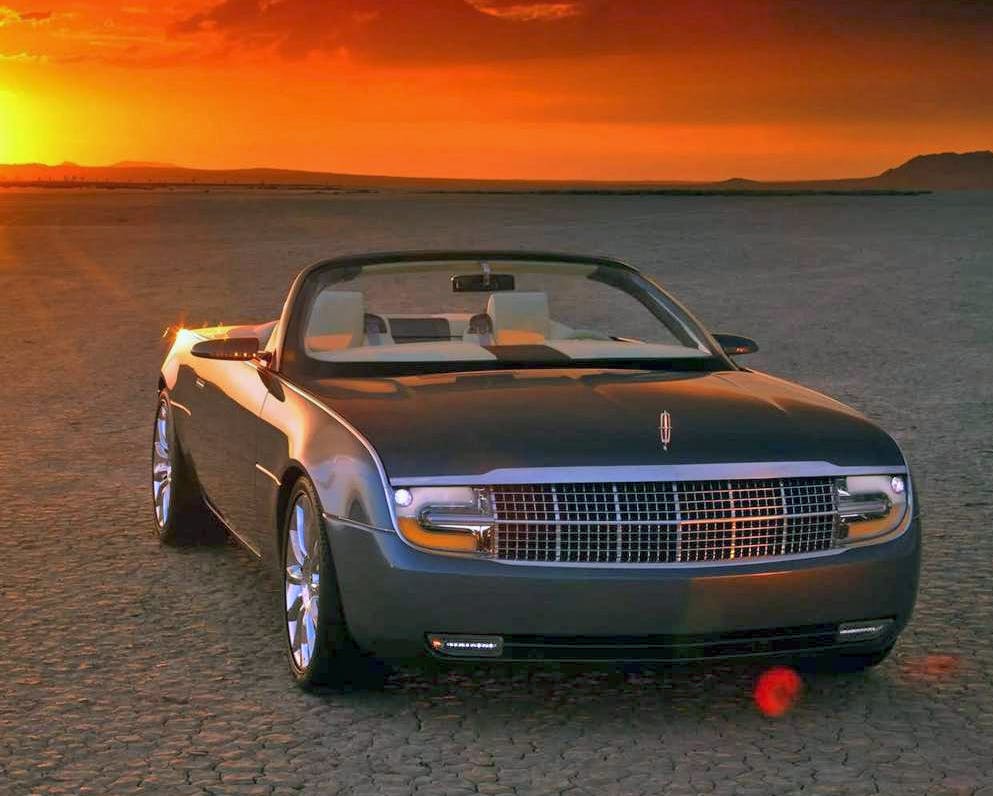
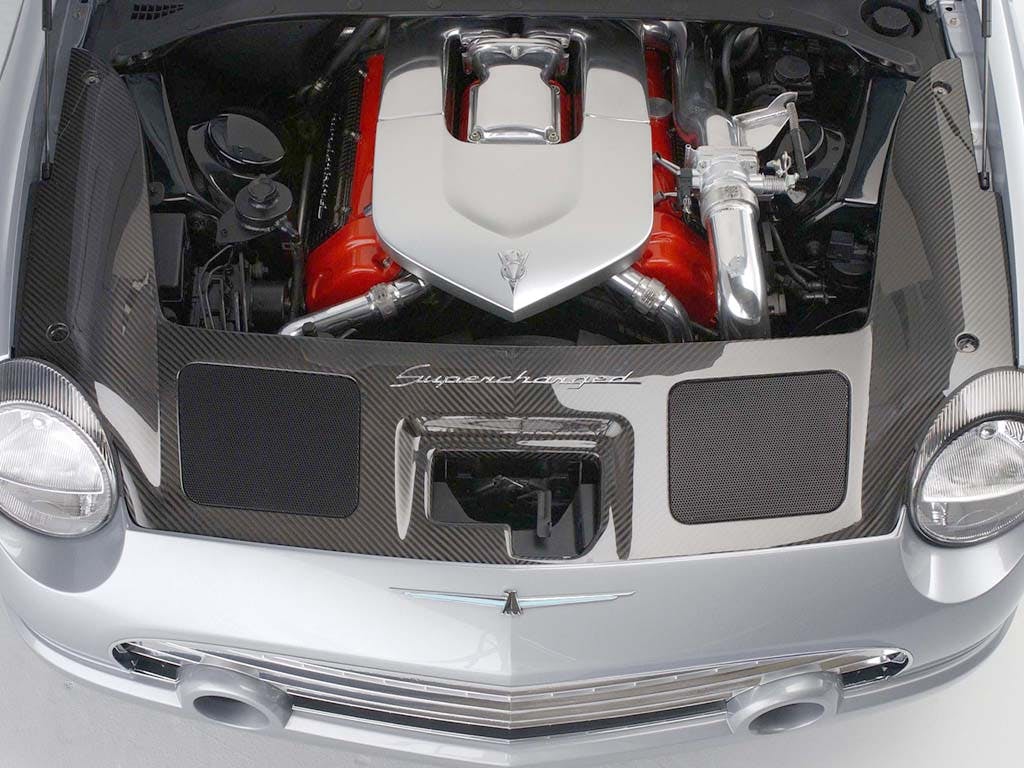
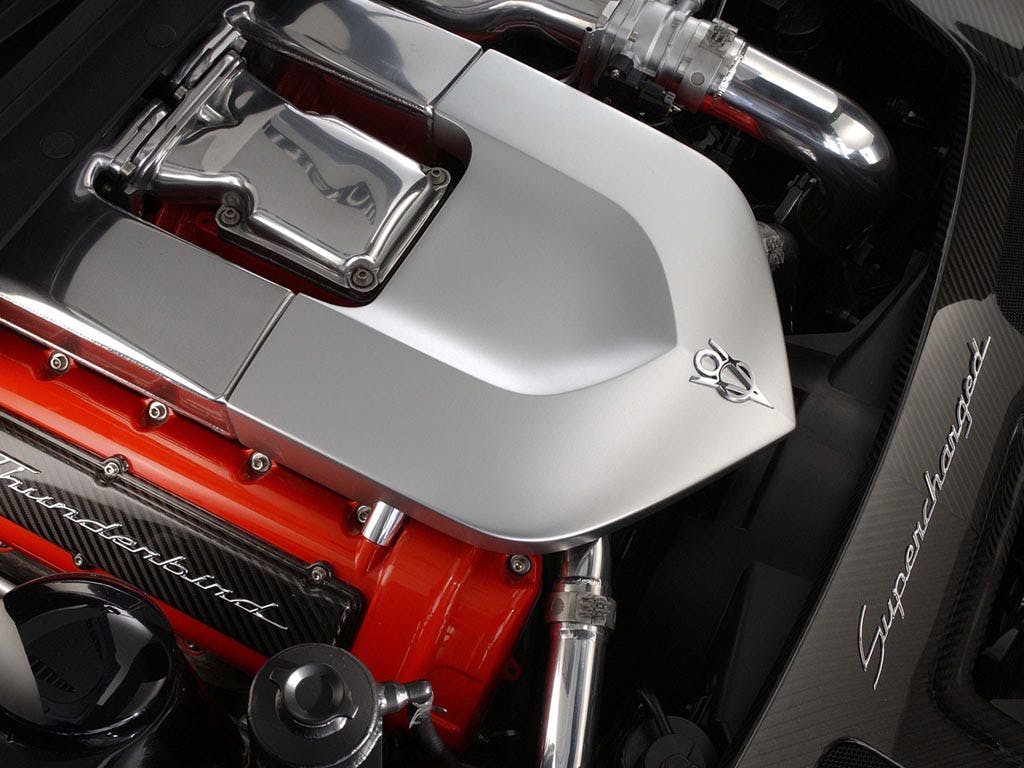

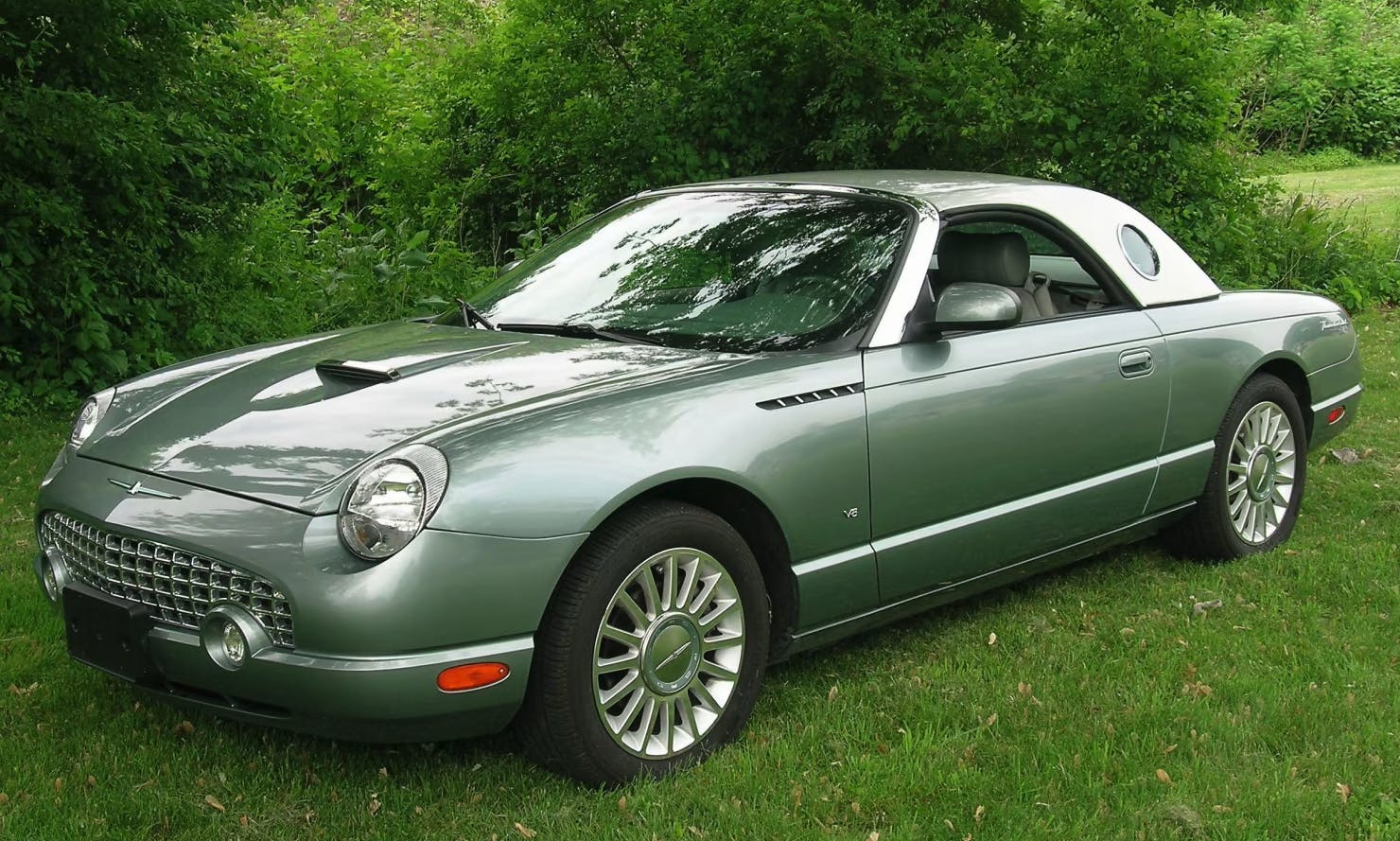

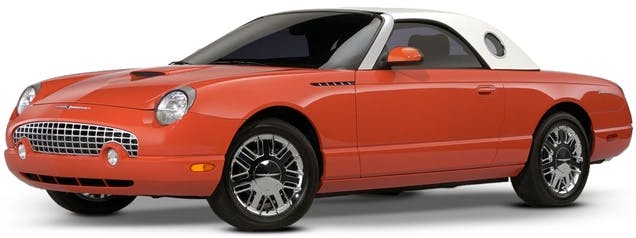


Like other comments here, I felt the styling was a bit too “soft,” too understated to properly represent the original mid’50s T-birds. But it had the same drivetrain as the 2000 Lincoln LS Sport Package that I purchased new and kept for 13 years. It was a good sport sedan and very nearly trouble free, one of the best cars I ever owned, so different in concept from the usual Lincoln offerings. I sold it within the family and it continued to be reliable for more years. If Ford had not sold Jaguar and continued to produce the LS, I’d have bought another. Disappointed, I bought a new BMW 535, a car virtually identical in size to the LS.
I think the styling was almost there; a couple more passes across the desk to get rid of the bubbly parts and dopey eyes, but what really doomed it (and will in the future) was the drivetrain. No one who might be interested in a T bird asked for it to be a conplicated Jag underneath. It was hohum at best and trouble prone for no good reason. It and the LS) should have been on stretched Stang platforms. The poor Lincoln though-trouble prone from day one like a Jag, and styled like a Diamante.
I liked the idea of it, but the styling was a more than a little off in my mind, especially the nose.
If you own a Chrysler TC by Maserati you need this one in your garage right next to it to cpmplete a collection of $35k cars wirth $2,500. Sorry, not sorry, it was the nicest thing I could think of to say about this car.
Disappointed yes. But perfect for seniors wanting a Sunday fall cruise in the sun. Fall leaves working their magic!
A stop at a local winery with some brie cheese. Maybe, we have one to many glasses and spend the setting sun and night at our favorite Bed and Breakfast. Oh memories, perfect.
Another missed mark was Volvo’s poor attempt to recapture the allure of the 1800ES.
I bought a 2005 a few years back. Low mileage, near mint. I kept it for 3 years as a fun car show and ice cream run car. It did everything it needed to do and did it well. Quick, comfortable, quiet boulevard cruiser. People need to stop comparing it to the Corvette or saying Ford should have done this or done that. It was a modern ‘57 Thunderbird…no more, no less. By the way, after the 3 years, I sold for just under what I paid. Basically a free car.
Personally, I would love to have one. I had a ‘63 T Bird for a few years and liked though I found it a bit of a land yacht. Being a hot fodder, I would have to add a bit more power (maybe a Coyote engine and a 5 speed…)
Long article. Let me help. The retro baby Thunderbird was a compromise in every way, including boring, conservitave lines, no rear end, lousy performing v8 and an automatic (really?) transmission. It absolutely did nothing well. Cursive paint and interior editions stirred minor interest but they were a flop and bumper to bumper disappointment. At least Plymouth Prowler fans had a car worth being let down about. Fantastic looks and a freaking V6.
I bought one for my wife also. She loves it. It’s a 2002 and it has as much power as anyone SHOULD need. It is not a drag race car and, from my understanding was always intended to be a specialty car, thus the Boulevard Cruiser identity. There are several references to 2002-2005 T-Birds and Corvettes. I don’t see a potential buyer going from the Thunderbird dealer to the Corvette outlet. Seems like two different customers to me. I could be wrong.
I purchased a new Black 2002 T-Bird and now a second Black on Black 2002 T-Bird for my wife. She loves the car. For $15,000. Cdn. with 130,000 Km. You can not beat it for performance, enjoyability to drive and economy. Every where she drives it she gets nothing but positive comments and envious looks. We just love these cars.
I also just bought a 2020 Lincoln Continental Reserve, white with black interior, that had never been released by Lincoln Canada, with 55 km on it, + warranty, for a measly $50,000, Cdn. Again you can not beat it for comfort, enjoyability to drive and economy to operate, the performance ain’t bad either, as are the envious looks. The europeans have nothing on this car for looks or ride or sheer gadgetry. Considering the price of an F150, an awesome purchase.
Still have my 1984 F150 short box hotrod, I bought new.
Happy Ford owner.
Mehhh. Too round
Well written article and enjoyable read, but doesn’t do anything to deter from the fact that the car was a garbage build meant to follow a trend that was already on its way out, and instead ended up as catnip for geriatrics.
T-Bird BLUE ( 2002) Is What Catches Every ones Eye !!!!
Only 1 To Fly & gets More Looks than ANY Vett !!!!!!!!!!!!!!!
The problem with these was not the styling or the performance. It was the price.
I was a salesman at Beverly Hills Ford when Ford was selling these, and sure enough they were slow movers at first. There weren’t many options on them, and they were mostly around $40,000 in early 2003 when I was selling cars. That’s over $66,000 in today’s dollars. As they began to sit on dealer lots, Ford started upping the incentives, and the managers at Beverly Hills Ford figured out a way to sell some (sans hardtop) for $29,900. At that price (just under $50k today), we had no problem moving the metal, and the dealership quickly became the best selling Thunderbird dealer in the country, despite being a small dealership that tended to sell only about a 100 cars per month. They were simply too expensive for what they were at $40k.